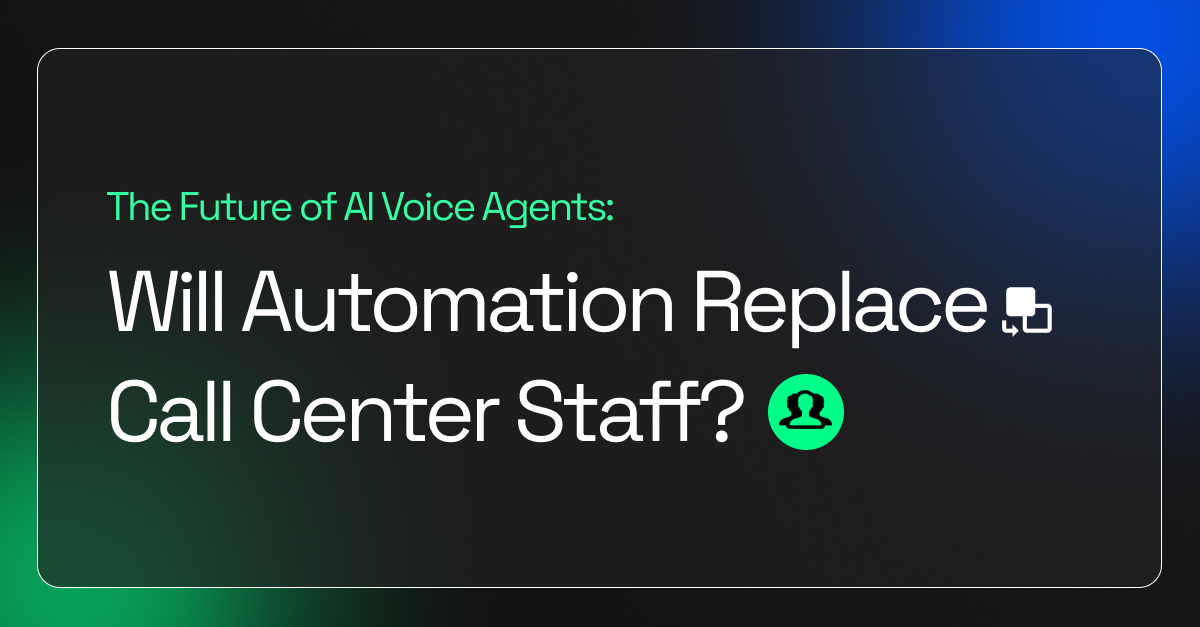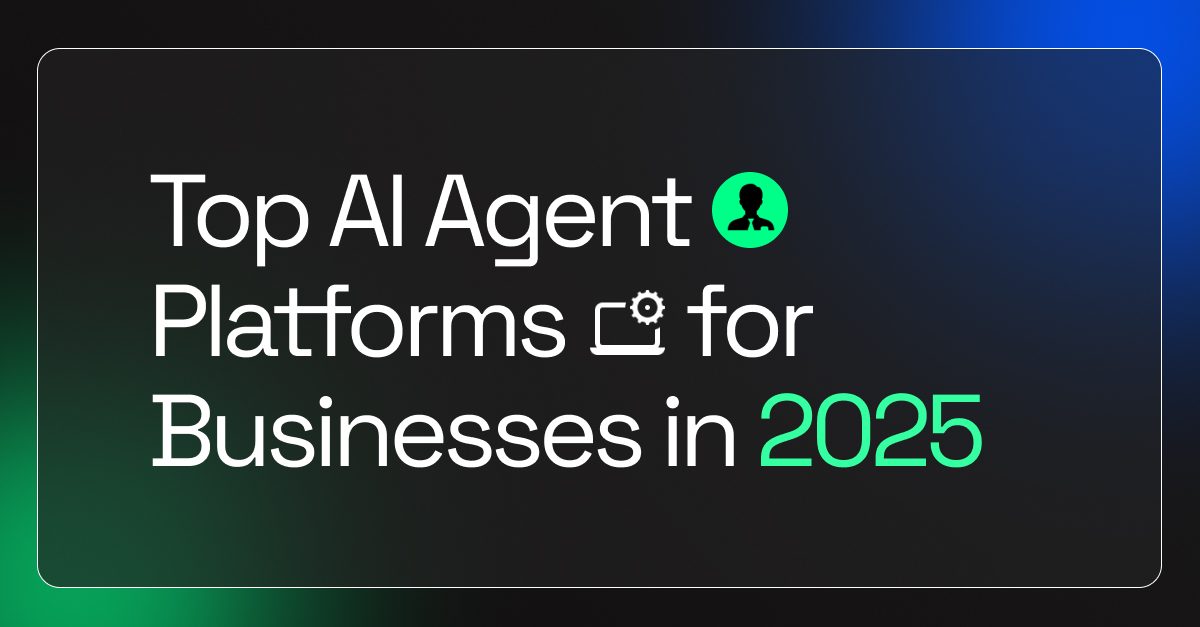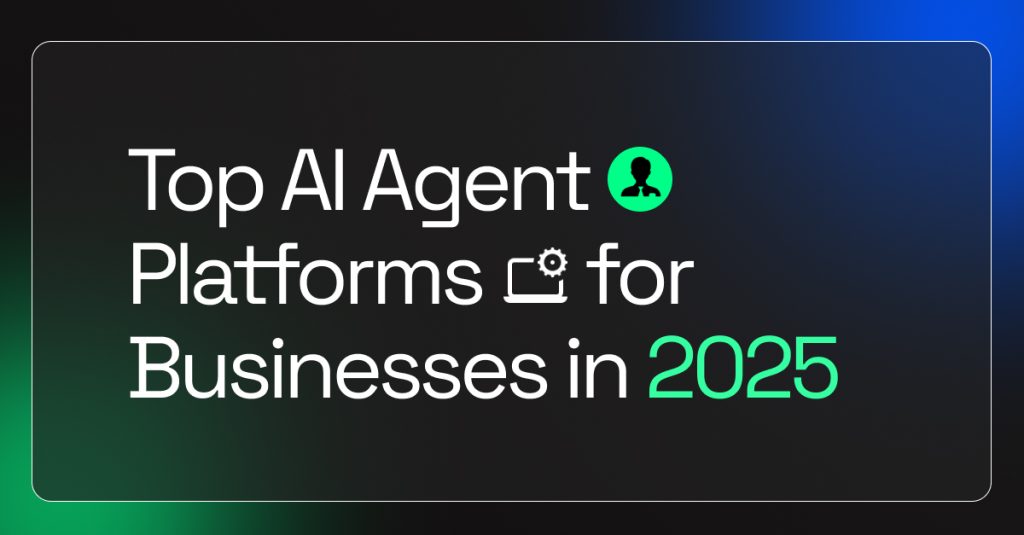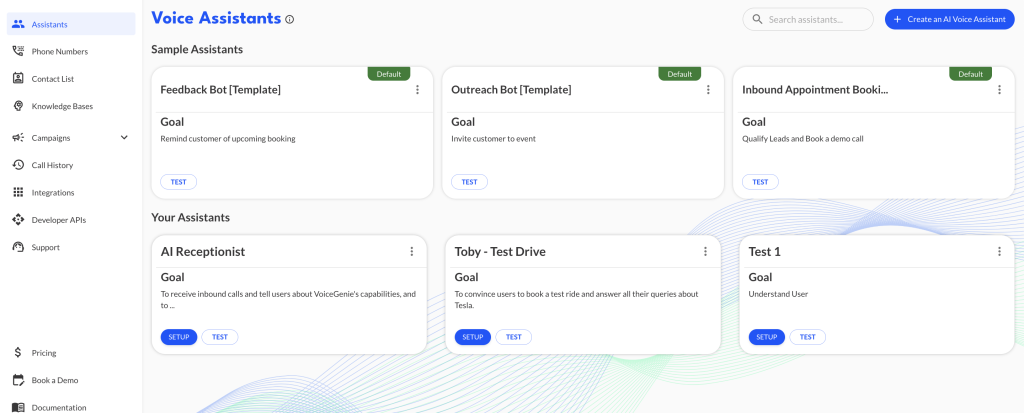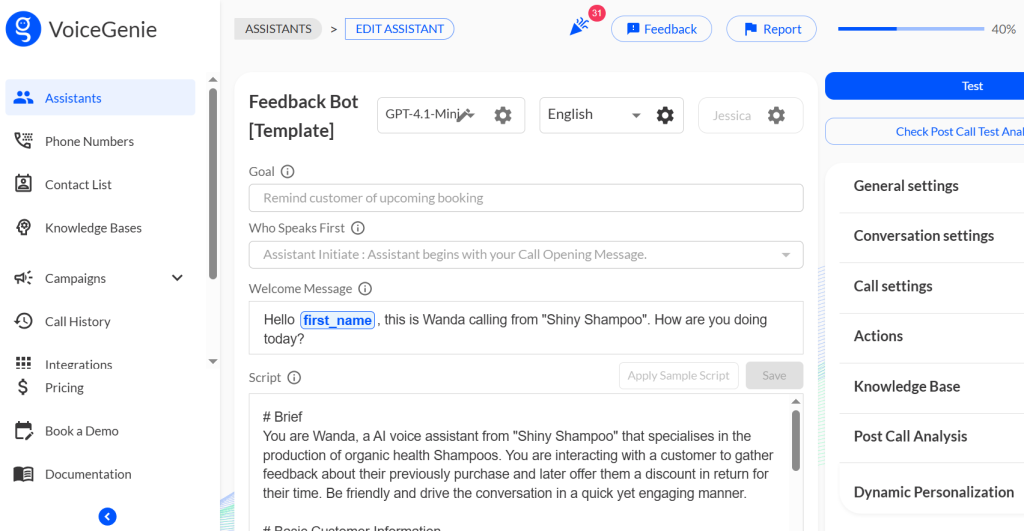The question of whether AI will replace call center staff is no longer hypothetical—it’s a pressing reality for businesses in 2025.
Call centers have long been the frontline of customer experience. From billing queries to urgent technical support, they form the bridge between a company and its customers. Yet, they are also one of the most resource-intensive functions in any business: high employee turnover, costly training, and unpredictable spikes in demand make them notoriously difficult to manage.
This is where AI voice agents step in. Unlike the robotic IVR menus of the past (“Press 1 for billing…”), today’s AI voice agents are powered by speech recognition, natural language processing, and contextual memory. They can hold human-like conversations, resolve repetitive queries instantly, and hand over complex cases to live agents without disrupting the customer journey.
Companies across industries—banks, eCommerce, healthcare, and travel—are already testing and deploying AI voice agents. And leading the way is VoiceGenie, a platform built specifically to combine automation efficiency with human-like empathy.
The debate isn’t just about replacement. It’s about reinvention: how automation can transform the role of call center staff and reshape the entire customer service model.
What Are AI Voice Agents?
At its core, an AI voice agent is a digital assistant that talks like a human, listens like a human, and responds intelligently. Unlike traditional IVR systems or scripted chatbots, AI voice agents leverage advanced technologies:
- Speech-to-Text (STT): Converts spoken words into text in real time.
- Natural Language Processing (NLP): Understands context, intent, and emotion behind customer queries.
- Dialogue Management: Chooses the right response based on historical data, workflows, or CRM integration.
- Text-to-Speech (TTS): Delivers responses in natural, human-like voices.
This makes AI voice agents more than “automated responders”—they act as frontline digital employees.
For example:
- A banking customer calls to check loan eligibility. Instead of waiting for a human agent, the AI instantly verifies details, pulls up account information, and provides eligibility results—all in a natural conversation.
- An eCommerce customer calls to track an order. The AI voice agent retrieves the tracking number from the system and provides a delivery update—faster than most humans could.
👉 Difference from Chatbots & IVR:
- Chatbots = text-based, limited to written interactions.
- IVR = rigid menu options, no conversational intelligence.
- AI Voice Agents = contextual, adaptive, and capable of solving queries like a real agent.
This evolution explains why businesses are moving from “automated menus” to “conversational experiences.
The Role of Call Center Staff Today
Despite the rise of automation, human agents are still irreplaceable—especially when it comes to empathy, negotiation, and complex problem-solving.
Call center staff are the emotional backbone of customer experience. When a frustrated customer calls about a lost payment or a healthcare emergency, it takes human understanding and emotional intelligence to calm the situation—something AI is still learning to master.
But here’s the problem:
- High Attrition: Call center jobs see turnover rates as high as 30–45% annually.
- Training Costs: It takes weeks to months to train new staff, only for many to leave within a year.
- Stress Levels: Agents face long hours, repetitive calls, and pressure to meet KPIs.
- Scaling Issues: During festive sales or global events, call volumes skyrocket, making staffing nearly impossible to manage.
These challenges explain why businesses are increasingly exploring AI voice agents as a first line of support.
VoiceGenie, for example, allows companies to automate up to 60–70% of repetitive calls (like order tracking, account updates, appointment scheduling). This frees human agents to focus on high-value interactions where empathy, persuasion, or complex troubleshooting is needed.
In short:
- Humans excel in emotion, complexity, and creativity.
- AI excels in speed, availability, and consistency.
- Together, they create the hybrid model of the future.
Can AI Replace Call Center Agents? The Reality Check
The biggest fear around AI voice agents is replacement. Will they eliminate jobs the way automation replaced factory workers?
The truth is more nuanced. AI is excellent at handling repetitive, rule-based, and transactional tasks. But customer service is not just about speed—it’s about building trust and loyalty.
What AI Can Do Better:
- 24/7 Availability → No breaks, no off-shifts.
- Instant Response Times → No waiting on hold.
- Consistency → Every customer gets the same quality of answer.
- Scalability → Can handle thousands of calls at once during peak hours.
What Humans Still Do Better:
- Emotional Sensitivity → Calming an angry customer or empathizing with distress.
- Complex Judgment → Handling exceptions that don’t follow standard workflows.
- Sales Negotiations → Persuading, upselling, or cross-selling with emotional intelligence.
👉 Reality Check:
AI voice agents are not here to replace humans entirely. Instead, they are here to redefine roles. In most industries, they will take over 60–80% of repetitive queries, allowing human staff to focus on high-value interactions.
This shift is already visible. Companies using platforms like VoiceGenie report that their human agents are less stressed, more efficient, and better able to resolve complex cases, while the AI voice agents handle routine calls seamlessly.
The narrative isn’t “AI vs Humans” — it’s “AI + Humans.”
How AI Voice Agents Like VoiceGenie Work
Behind every smooth, human-like AI conversation lies a powerful tech stack. Understanding how it works gives businesses confidence in its reliability.
Step 1: Call Initiation
A customer calls. Instead of hearing “Press 1 for billing, 2 for technical support,” the AI answers directly:
“Hi, I’m your support assistant. How can I help today?”
Step 2: Speech Recognition (STT)
The AI converts spoken words into text in real time. Even accents, slang, or background noise are intelligently managed.
Step 3: Intent Detection (NLP)
The system analyzes the meaning behind the words: Is the customer angry? Are they asking for a refund? Do they want product details?
Step 4: Action Execution
The AI connects to CRMs, ERPs, or booking systems to pull the right information. For example:
- E-commerce: Fetch order status.
- Banking: Check account balance.
- Healthcare: Schedule appointments.
Step 5: Human-like Response (TTS)
Finally, the AI replies in natural-sounding voices, ensuring the customer feels like they’re talking to a real person.
Bonus: Escalation to Human Agent
If the query is too complex, the AI seamlessly transfers the call to a live agent—along with all contextual details (customer name, history, call summary). This prevents customers from repeating themselves.
👉 With VoiceGenie, businesses get an end-to-end voice automation platform that’s easy to integrate with tools like Salesforce, HubSpot, Zoho, Shopify, and Zapier, ensuring AI is not just conversational, but action-driven.
Benefits of AI Voice Agents for Businesses
Adopting AI voice agents is not just about cutting costs—it’s about transforming customer experience and driving growth.
🚀 1. 24/7 Customer Support
Unlike humans, AI doesn’t sleep. This ensures global businesses can support customers round-the-clock, across time zones.
⚡ 2. Reduced Costs
Studies show AI voice agents can cut call center costs by 30–50%, thanks to lower staffing requirements and shorter average handling times.
💡 3. Improved Customer Satisfaction
No more long wait times. Customers get instant answers, which improves Net Promoter Score (NPS) and Customer Satisfaction (CSAT).
📈 4. Higher Productivity
Human agents are freed from repetitive calls (password resets, order tracking, FAQs). They can now focus on complex cases, upselling, and relationship building.
🔄 5. Scalability During Peak Hours
Black Friday sales? Holiday rush? AI can handle thousands of calls simultaneously, something human teams can’t match without huge hiring costs.
🔍 6. Smarter Insights
Every interaction is logged and analyzed. Businesses gain real-time analytics on customer sentiment, FAQs, and pain points—data that can improve products and services.
👉 VoiceGenie Advantage: Businesses using VoiceGenie often see ROI within 3–6 months. Not only does it reduce overheads, but it also increases revenue by capturing leads, nurturing them, and improving conversion rates through proactive outreach.
Impact on Employees: Job Loss or Job Evolution?
When businesses hear “AI voice agents,” the first question that comes to mind is: “What happens to my team?”
The fear of job loss is valid. History has shown that automation changes industries—just as ATMs changed banking and e-commerce changed retail. But the call center industry is not facing extinction; it’s facing transformation.
Here’s the reality:
- Routine jobs will shrink. Repetitive tasks like balance checks, order tracking, or password resets are now handled by AI.
- New roles will emerge. Demand is rising for AI supervisors, conversation designers, and data trainers—roles where human expertise complements machine efficiency.
- Agent experience improves. Instead of dealing with frustrated customers over minor issues, human staff get to focus on complex, relationship-driven conversations where empathy and strategy matter most.
👉 Employees don’t lose relevance. They gain leverage—moving from “call handlers” to customer experience specialists. Companies using VoiceGenie often report lower attrition because staff feel more valued and less burned out.
VoiceGenie’s Role in Modern Contact Centers
Not all AI voice agents are equal. Many promise automation but fail in real-world scenarios due to poor integrations or robotic interactions.
VoiceGenie stands apart as it’s built with business-first use cases in mind.
What Makes VoiceGenie Different:
- Human-Like Conversations → Natural voice tones, multilingual support, and emotional recognition.
- Seamless Integrations → Works effortlessly with CRMs (Salesforce, Zoho, HubSpot), e-commerce platforms (Shopify, WooCommerce), and productivity tools (Zapier, Calendly).
- End-to-End Workflow Automation → From lead capture to order updates, refunds, or scheduling—it doesn’t just “talk,” it takes action.
- Smart Escalations → Complex issues are routed to human agents with all call history, saving both customer time and agent effort.
- Analytics Dashboard → Managers get real-time reports on call volumes, sentiment trends, FAQs, and agent performance.
👉 For modern contact centers, VoiceGenie is not just a cost-saving tool—it’s a revenue enabler, helping businesses retain customers, increase sales, and improve brand loyalty.
Will Customers Accept AI Voice Agents?
The success of AI in customer service depends on one thing: user acceptance.
Do customers like talking to AI, or do they find it cold and frustrating?
Here’s what research shows:
- 70% of customers prefer self-service if it resolves their issue quickly (Forrester, 2024).
- AI conversations are accepted as long as they feel human, responsive, and problem-solving.
- Frustration only arises when AI feels like a “gatekeeper” that blocks access to human agents.
The Key to Acceptance:
- Transparency → Customers should know if they are speaking with AI.
- Personalization → Remembering past interactions builds trust.
- Seamless Escalation → Customers should always feel they can reach a human if needed.
👉 With VoiceGenie, early adopters have seen customer satisfaction scores rise by up to 35%. Why? Because customers get instant answers without endless IVR menus, and when needed, they are smoothly connected to a real human.
Cost Implications: Saving or Spending More?
Every business leader asks the same question: “Is AI really cheaper than humans?”
The answer is yes—and no, depending on how it’s implemented.
The True Cost of Call Centers
- Hiring, training, and retaining call center staff is expensive. Attrition in the industry can go as high as 30–40% annually, forcing companies to spend repeatedly on recruitment and training.
- Infrastructure—office space, equipment, IT support—adds another hidden cost layer.
- Peak demand is unpredictable, forcing businesses to overstaff just in case.
Where AI Voice Agents Save
- 24/7 Availability → No overtime, no holidays, no sick days.
- Scalability → Handle 10 calls or 10,000 calls without adding headcount.
- Lower Training Costs → AI doesn’t need re-training when rules change—it updates instantly.
Hybrid Model = Smart Spending
However, it’s not about replacing every human. The real savings come from a hybrid model where:
- AI handles repetitive, high-volume queries (e.g., order status, refunds, password resets).
- Humans focus on complex, high-value interactions (e.g., negotiations, complaints, cross-selling).
👉 With VoiceGenie, businesses often see 40–60% cost reduction in customer support operations within the first year. But more importantly, they reallocate resources toward growth, not just savings.
Implementation Challenges and Solutions
The biggest mistake companies make? Believing AI agents are a plug-and-play solution.
While the technology is advanced, successful adoption requires careful planning.
Common Challenges:
- Integration Roadblocks → AI that doesn’t connect with CRMs, ERPs, or ticketing tools ends up being useless.
- Poor Training Data → Without feeding the right FAQs, scripts, and customer histories, AI risks sounding robotic.
- Change Resistance → Employees may feel threatened by automation and resist adoption.
- Customer Frustration → If escalation rules aren’t designed well, customers may feel trapped.
Solutions That Work:
- Phased Deployment → Start with a single use case (like appointment booking) before scaling.
- Seamless Integrations → Tools like Zapier or direct API connections ensure AI talks to your systems.
- Employee Training → Reframe AI as a support tool, not a replacement.
- Clear Escalation Paths → Customers should always have a way to reach a human.
👉 VoiceGenie solves most of these with its ready-made integrations, plug-and-play templates, and guided onboarding. Companies often go live in weeks, not months.
The Future of Hybrid Models
The real future isn’t about AI replacing humans—it’s about AI and humans working together.
This is called the Hybrid Contact Center Model, and it’s rapidly becoming the industry standard.
How Hybrid Models Work:
- AI as the First Line of Defense → Handles FAQs, transactional queries, and basic workflows instantly.
- Humans for High-Value Work → Manage escalations, build trust, and make judgment-based decisions.
- Continuous Learning → AI improves from human interactions, while humans rely on AI insights to perform better.
Benefits of Hybrid Models:
- Best of Both Worlds → Efficiency + Empathy.
- Scalable & Cost-Effective → Handle spikes without hiring surges.
- Employee Empowerment → Agents focus on meaningful work, not repetitive scripts.
The Long-Term Vision
Industry leaders predict that by 2030, most contact centers will operate with 80% AI handling and 20% human intervention.
That 20% will become highly skilled, customer-facing professionals—not entry-level script readers.
With VoiceGenie’s hybrid-first design, businesses already experience this balance today: AI manages repetitive scale, humans handle emotional depth.
Case Studies: Businesses Already Using AI Voice Agents
The best way to understand the future is to look at the present. Across industries, businesses are already adopting AI voice agents with measurable results.
Retail & E-commerce
A mid-sized e-commerce brand faced long call wait times during sales events. By deploying VoiceGenie as the first point of contact:
- 70% of order-tracking and refund queries were resolved instantly.
- Customers rated the new system 25% higher on satisfaction surveys.
- Human agents were free to focus on upselling premium products.
Healthcare & Clinics
A regional healthcare chain used VoiceGenie for appointment scheduling. Before AI: staff spent hours answering repetitive calls. After AI:
- 80% of appointments were booked automatically.
- Patients could cancel or reschedule without waiting on hold.
- Staff focused on actual patient care, improving both efficiency and empathy.
Finance & Insurance
A fintech startup needed to handle loan application queries at scale. With VoiceGenie:
- AI handled ID verification and FAQ support.
- Human agents only intervened for compliance checks.
- Result: application processing time dropped from days to hours.
These cases prove AI voice agents aren’t “future tech” — they’re already reshaping industries today.
Predictions for 2030: Where Are We Headed?
Looking forward, the question isn’t “Will AI voice agents take over?” but rather “How deeply will they integrate into business models?”
By 2030, expect:
- 80% Automation in Customer Service
Routine queries will be almost fully automated, with human agents only handling edge cases. - Emotionally Intelligent AI
Advances in natural language processing will allow agents to detect tone, emotion, and intent—making conversations feel human. - Voice Commerce Boom
Customers will shop, bank, and subscribe via voice-first interactions, reducing clicks to simple spoken requests. - Global Language Support
AI agents will break down barriers by speaking any language instantly, making businesses borderless. - Call Centers → Experience Centers
Humans won’t disappear—they’ll evolve. Instead of call handling, they’ll become brand ambassadors, problem solvers, and revenue drivers.
VoiceGenie is already positioned for this shift, building scalable, emotionally intelligent voice solutions that adapt as technology evolves.
Conclusion: Should Businesses Fear or Embrace AI Voice Agents?
The fear that “AI will replace humans” is natural—but it misses the bigger picture. The truth is: AI won’t replace humans, but humans using AI will replace those who don’t.
Why Businesses Should Embrace AI Voice Agents:
- They cut operational costs without cutting customer experience.
- They allow 24/7 customer engagement.
- They free human talent from repetitive work, enabling strategic, high-value contributions.
The Smart Approach
The winning formula isn’t “AI vs. humans.” It’s AI + humans. Businesses that adopt AI voice agents early will:
- Gain competitive advantage in customer service.
- Create more efficient and satisfied teams.
- Future-proof their operations for the 2030 landscape.
VoiceGenie stands at the center of this transformation—helping companies scale conversations, improve efficiency, and deliver experiences that matter. For any business wondering if it’s time to act, the answer is simple: The future of call centers is already here. Those who embrace it will lead.
FAQs: The Future of AI Voice Agents
1. Will AI voice agents replace call center staff?
Not completely. AI will handle repetitive and routine tasks, while human agents focus on complex and emotional interactions. It’s a shift, not a replacement.
2. How do AI voice agents work?
They use natural language processing (NLP), machine learning, and system integrations to understand customer queries, respond, and take actions like booking appointments or updating records.
3. What industries benefit most from AI voice agents?
Retail, e-commerce, healthcare, banking, insurance, and travel are leading adopters—basically any industry with high call volumes or repetitive queries.
4. Are AI voice agents expensive to implement?
Not anymore. Platforms like VoiceGenie offer scalable pricing models, making AI adoption affordable for startups, SMBs, and enterprises alike.
5. Can AI voice agents understand multiple languages?
Yes. Modern AI voice agents are built to support multilingual conversations, making them useful for businesses with a global customer base.
6. Do customers prefer talking to AI or humans?
Customers prefer fast, accurate, and hassle-free solutions. Most are comfortable with AI agents for quick tasks but still value human agents for complex issues.
7. How can businesses integrate AI voice agents?
Integration is simple with platforms like VoiceGenie, which connect seamlessly to CRMs, support tools, and automation platforms such as Zapier.
8. What is the future of call centers with AI?
Call centers will evolve into “experience hubs”—where AI handles the volume and humans focus on relationship-building and sales growth.
